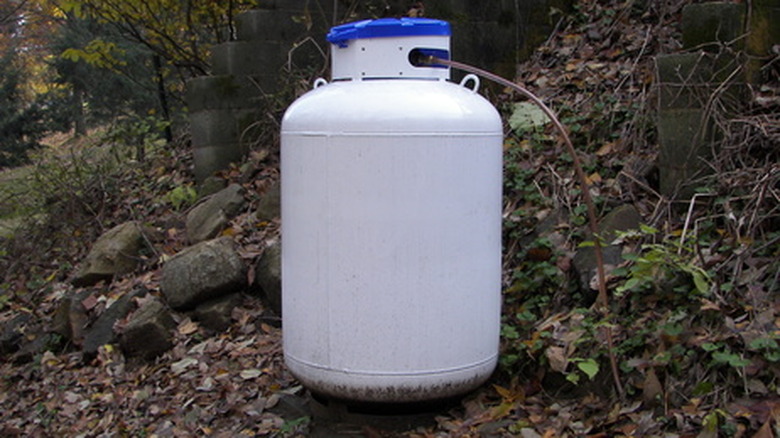How To Calculate Vacuum Tank Stress
The American Society of Mechanical Engineers (ASME) maintains the technical standards for the maximum allowable stress on the walls of a pressure vessel, such as a vacuum tank. The formulas from Section VIII, Division 1 of ASME codes calculate the value using the maximum allowable working pressure inside the tank and incorporate a safety factor of four. To calculate actual vacuum tank stress for a given working pressure, use that pressure in the calculation and multiply the final result by four.
Step 1
Divide the working pressure by twice the joint efficiency. For an example, with a working pressure of 90 psi and a joint efficiency of 0.9, the result is 50.
Step 2
Divide the tank diameter by the wall thickness. For this example, 60 inches divided by 0.6 inches yields 100.
Step 3
Add 0.2 to the previous result. Continuing with the previous numbers, 100 plus 0.2 is 100.2.
Step 4
Multiply the results from the previous steps together to get the maximum allowable tank stress, if 100 psi was the maximum working pressure. With the example numbers, the result is 5,010 psi.
Step 5
Multiply the previous result by four to remove the safety factor and find the actual vacuum tank stress. The result in this case is 20,040 psi.
Things Needed
- Wall thickness, excluding corrosion allowance, in inches
- Working pressure, in psi
- Inside tank diameter, excluding corrosion allowance, in inches
- Joint efficiency
TL;DR (Too Long; Didn't Read)
This calculation is for ellipsoidal tanks, the most common shape for production facility vessels. The calculations for cylindrical, hemispherical and conical vessels differ slightly.
Cite This Article
MLA
Friedman, Joe. "How To Calculate Vacuum Tank Stress" sciencing.com, https://www.sciencing.com/calculate-vacuum-tank-stress-7875428/. 24 April 2017.
APA
Friedman, Joe. (2017, April 24). How To Calculate Vacuum Tank Stress. sciencing.com. Retrieved from https://www.sciencing.com/calculate-vacuum-tank-stress-7875428/
Chicago
Friedman, Joe. How To Calculate Vacuum Tank Stress last modified March 24, 2022. https://www.sciencing.com/calculate-vacuum-tank-stress-7875428/
